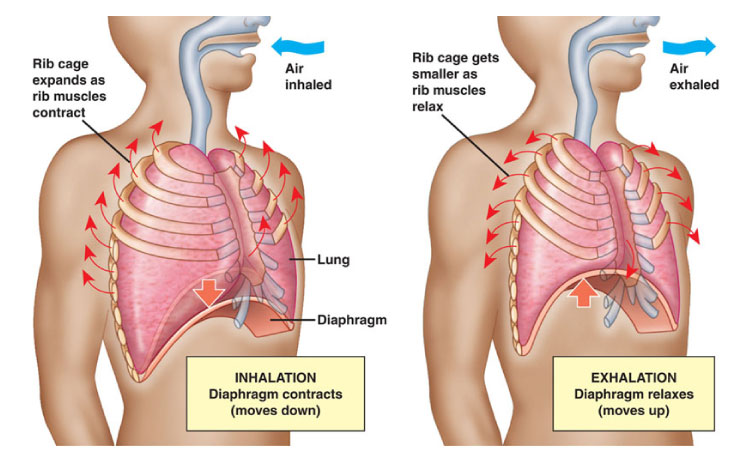
In order to master sounding like a pro with your voiceover reads, you want to have excellent breath control. We don’t want to be running out of breath in the middle of a sentence gasping for breath. These 3 breathing exercises to help you increase your lung capacity will do wonders for your breath control if you do them consistently. Being in control of your breath is so important as a professional voice actor. Let’s jump into it!
Connect to your diaphragm:

Your diaphragm is like your engine. Most of the time, people only breathe into their upper lungs and do not utilize their diaphragm muscle. If you are breathing using only your upper lungs you will notice your stomach does not expand much, but your chest expands and your shoulders raise.
For diaphragmatic or “belly breathing” you use all of your lung capacity. It works best when you breathe through your nose and focus on filling up your stomach with air. When you breathe into your diaphragm, your abdominal cavity is pulled down and your abs and diaphragm work together to fully inflate your lungs. Your stomach will expand instead of your chest.
Utilizing your diaphragm will allow you to talk so much longer than if you take shallow breaths just filling up your upper lungs.
Breathing Exercise #1 – Hold “eee”:
For this exercise lay on the floor. This actually makes it easier to see if you are breathing deep into your diaphragm because you will see your stomach rising.
You can even place a lightweight bean bag (the kind you head up in the microwave) on your stomach to train your brain to expand your stomach and lift that item up while you breathe deeply.
- Use a stopwatch to time yourself.
- Take a deep breath through your nose and fill up your stomach (see the bean bag rise up)
- say “eee” until you run out of air. As you breathe out, engage your abdominal muscles. This will assist your diaphragm.
You should be able to hold “eee” longer and build up stamina over time. Your goal should be holding “eee” between 15-25 seconds as a woman and 25-35 seconds as a man.
Breathing Exercise #2 – Counting Your Breath:
- Stand with proper posture: Your feet shoulder-width apart, shoulders back, and ears in line with your shoulders.
- Breathe deeply with your nose filling up your belly for a count of 4
- Hold your breath for a count of 2
- Exhale for a count of 8. When you exhale, purse your lips like you are trying to blow out a candle and engage your ab muscles again.
You can experiment with different counts for breathing in, holding your breath and exhaling.
Your goal over time is to breathe in for a shorter count and exhale for a longer count. A 10% inhale time to a 90% exhale time is ideal.
Breathing Exercise #3 – Exhale on “ShHH”:
This exercise for breathing really connects you to your diaphragm. It helps if you look into a mirror. Put your hands on your waist and as you engage your abdominal muscles on your exhale, you will feel your muscles engage.
- Take a deep breath through your nose and fill up your stomach.
- As you exhale, make a “sh” sound as you push the air out slowly. If you had a candle in front of you it wouldn’t blow out. Try to exhale slowly and maintain a steady stream of air.
- Focus on flexing your ab muscles and feel them engage with your hands as you exhale.
Again, your goal should be between 15 – 25 seconds if you are a woman and 25-35 seconds if you are a man.
In Conclusion…
I hope that these 3 breathing exercises to increase lung capacity are helpful. A great thing to keep in mind when warming up your voice for any kind of vocal work is to do breathing exercises first because it is a very gentle way to warm up your vocal cords as you are not using them to make noise. I use these exercises on a regular basis as a singer, and they translate beautifully with my voiceover warmups!
Happy recording!
Katelyn Dawn
